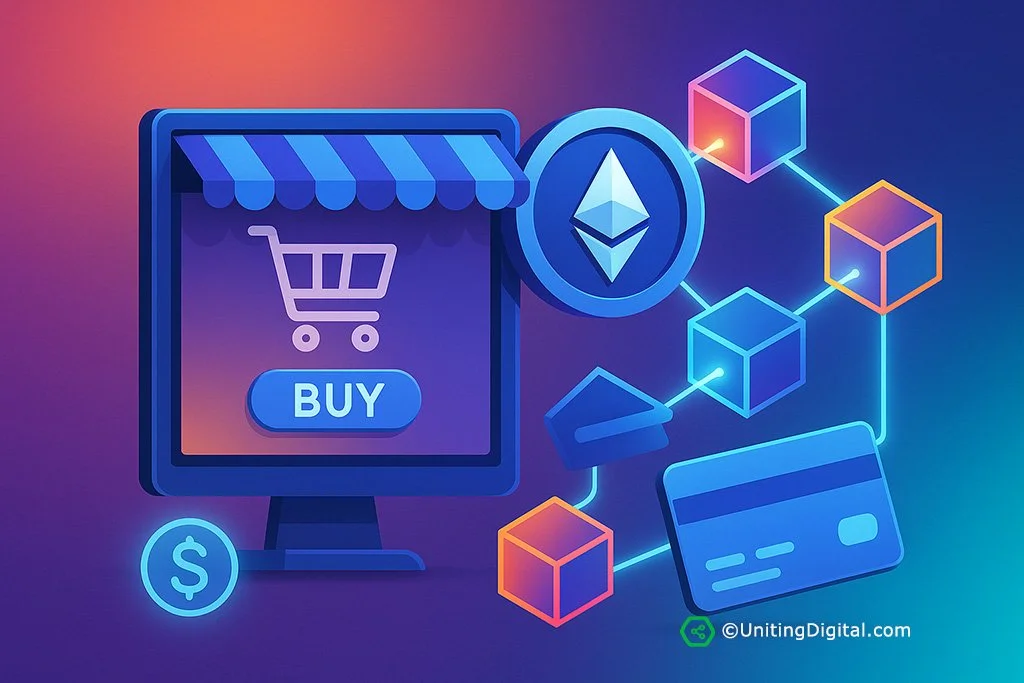From E-commerce to O-commerce: The Economic Shift Businesses Cannot Ignore
From E-commerce to O-commerce: Streamlining Payments with Blockchain
A New Era for Online Shopping
Imagine buying online and having your payment settle in seconds, saving merchants significant fees and earning you rewards on your digital wallet balance. This isn’t a futuristic dream—it’s O-commerce, the next evolution of e-commerce. O-commerce uses blockchain technology to handle payments, credit, and rewards directly, bypassing outdated financial systems.
What’s Driving the Change?
Traditional e-commerce payment systems are complex, involving a web of stakeholders—banks, processors, and networks. For a $100 purchase, the process feels instant to you, taking about three seconds. But merchants wait 2–7 days to receive $93–$98 after fees of 2–3%. This delay and cost can strain businesses, especially those with tight margins.
Recent developments, like Coinbase Commerce’s partnership with Shopify, show how O-commerce simplifies this. Their system uses programmable escrow for stablecoin payments—digital currencies pegged to stable assets. When you pay, funds are instantly “authorized” on the blockchain. Merchants can then “capture” the payment once the order is fulfilled, receiving funds in seconds. Fees drop to a fraction of a percent, and other flows, like refunds, are streamlined. Stablecoins are no longer just for crypto fans; they’re becoming a key part of global commerce.
For consumers, O-commerce means cheaper transactions, access to global markets, flexible rewards, and even earning interest on money held in digital wallets.
Image by Stripe
Image by Coinbase
Why This Matters for Business and Finance
The parallels to the early days of PayPal are striking. Just as PayPal unlocked global e-commerce by simplifying digital payments, O-commerce has the potential to redefine cross-border trade. Unlike PayPal, however, these rails are open, programmable, and non-custodial. Innovation isn’t limited by one company’s plans; it depends on how fast industries can adopt and adapt.
For businesses, the direct lesson is clear: payment infrastructure is no longer a cost center to be endured, but a lever of competitive advantage. Imagine a retailer reclaiming millions in lost processing fees and reinvesting that into customer acquisition or loyalty programs. For financial institutions, the rise of programmable commerce is a wake-up call to reposition value propositions beyond fee extraction.
Cross-Domain Parallels: From Cloud to Commerce
The O-commerce shift mirrors earlier transformations. In cloud computing, enterprises moved from owning servers to consuming infrastructure-as-a-service, unlocking both scale and agility. In finance, neobanks [1] showed how customer-centric design could chip away at incumbents. O-commerce blends both: scale through global blockchain rails, and agility through composable financial products like yield-bearing balances or zero-interest credit.
This is not disruption for disruption’s sake. It is a structural reallocation of value, moving billions from intermediaries back to merchants and consumers. Just as cloud redefined enterprise IT budgets, O-commerce may redefine retail economics.
[1] A neobank is a digital-first financial company.
Redefining E-commerce for a Blockchain Economy
The Forward Look: What to Watch Next
O-commerce is unlikely to replace traditional e-commerce overnight. Instead, it will absorb it gradually, much like cloud adoption did with on-prem systems. For business leaders and investors, the signals to watch are clear:
Stablecoin adoption rates among major retailers.
Integration by payment giants like Visa or Stripe, which could accelerate or dampen the shift.
Regulatory clarity on stablecoins, which will determine how quickly institutional capital follows consumer adoption.
The companies that treat O-commerce as strategic infrastructure, rather than an experimental add-on, will capture the early advantage. For investors, the upside lies in firms building rails and services around programmable payments, not just those selling tokens.
The Next Competitive Edge
O-commerce brings transparency, flexibility, and cost savings. Businesses that embrace it early will not only reduce costs but also transform how customers experience digital shopping into a new era of global trade.
About the Author
Arthur Wang




